Pingtung County was home to many of Taiwan’s earliest Hakka immigrants. Jiadong Township (佳冬鄉), now little more than a small rural outpost along the road to Kenting with a slowly dwindling population and a local economy supported mainly by aquaculture, was once a thriving Hakka stronghold. Evidence of the residents’ strong family ties, self-reliance and, in some cases, keen business sense, still remains. At the time of the Japanese takeover in 1895, it was still an important enough center that the incoming colonists sent a special military mission to capture it.
Nowadays, much has been done to preserve the cultural heritage of the village and turn it into a “Living Museum.” It makes for a lovely, tranquil day trip without the crowds, noise and bustle of large museums or one of Taiwan’s many “old streets.” Prominent families have left their mark at several sites throughout the village, which are now open to the public as historic sites, though some remain in use by the families.
TAIWAN’S ONLY YIN-YANG POOL
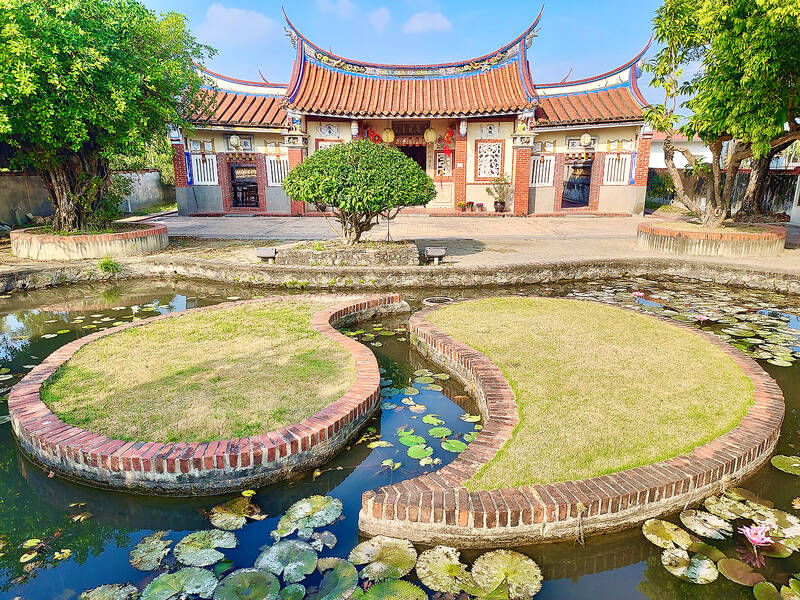
Photo: Tyler Cottenie
Looking at a map of the old downtown core of Jiadong, one can see a road just west of the train station called Jiasing Road (佳興路). Two things about this road are immediately obvious from a bird’s-eye view: it is the division between village residences on one side and farmland on the other, and it has a conspicuous feature in and out about halfway along its course. Originally, this road was to take a straight course, but after concerted efforts from locals, the property standing in the way was designated as a historic site and the road plan was diverted. This is the site of Yang Clan Ancestral Hall (楊氏宗祠).
Ancestral halls, where families worship important ancestors and hold other important functions, are a common site in Taiwan. This particular hall was built to honor the Yang family’s founding clan members, a Tang Dynasty official and his wife. During the reign of the Qianlong Emperor (乾隆帝, 1735–1796), some of their 19th-generation descendants made their way to Taiwan.
The 22nd generation founded a “share-holding ancestral worship association,” which set aside assets for the benefit of the entire clan, especially for activities related to ancestor worship. Finally, members of the 25th generation raised the required funds to build an ancestral hall in Jiadong, which was completed in 1913. Restoration work on the hall was completed mostly with public funds, but also with funds provided by the worship association through the sale of some of their landholdings.
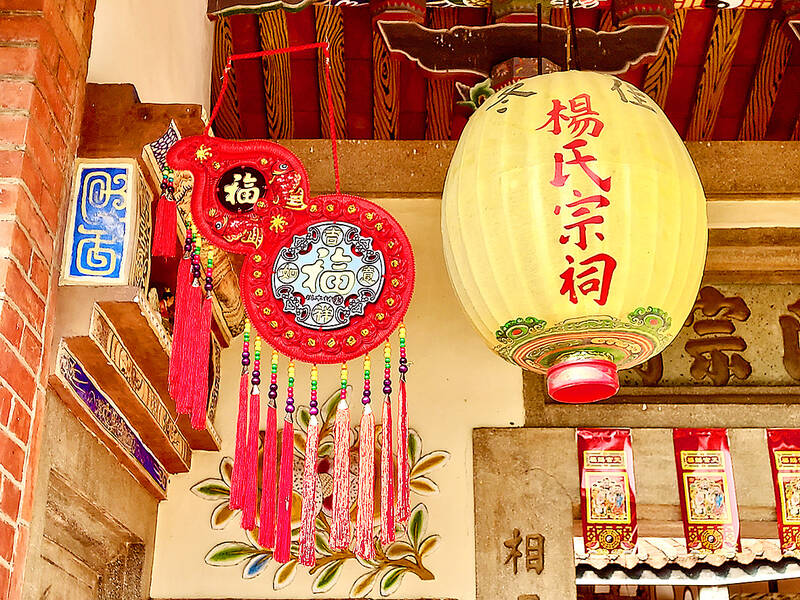
Photo: Tyler Cottenie
Since ancestral halls are not a rare sight in Taiwan, what earned this one its special designation as a historic site? In fact, it was not only the architecture of the hall itself, but the landscaping in front of the hall: the front yard features Taiwan’s only yin-yang pool. Two grassy islands outlined in brick form the yin-yang symbol, accented by water lilies in the surrounding water.
Jiasing Road would have cut right through the pool, but, fortunately, it was saved from destruction and is now open to the public. The aesthetic value of the front yard is further enhanced by well-manicured trees and the aroma of sweet osmanthus, one of the “five Hakka flowers.”
The swallowtail and horseback roof style of the hall, common in traditional Fujianese architecture, was chosen to demonstrate that the Yang family descends from an imperial official. The interior features moon gates with brightly painted ornamentation above. In the back, the crumbling remains of the former entrance gate sit under a rain cover, giving one an idea of how much weathering can occur in just a century without constant maintenance.
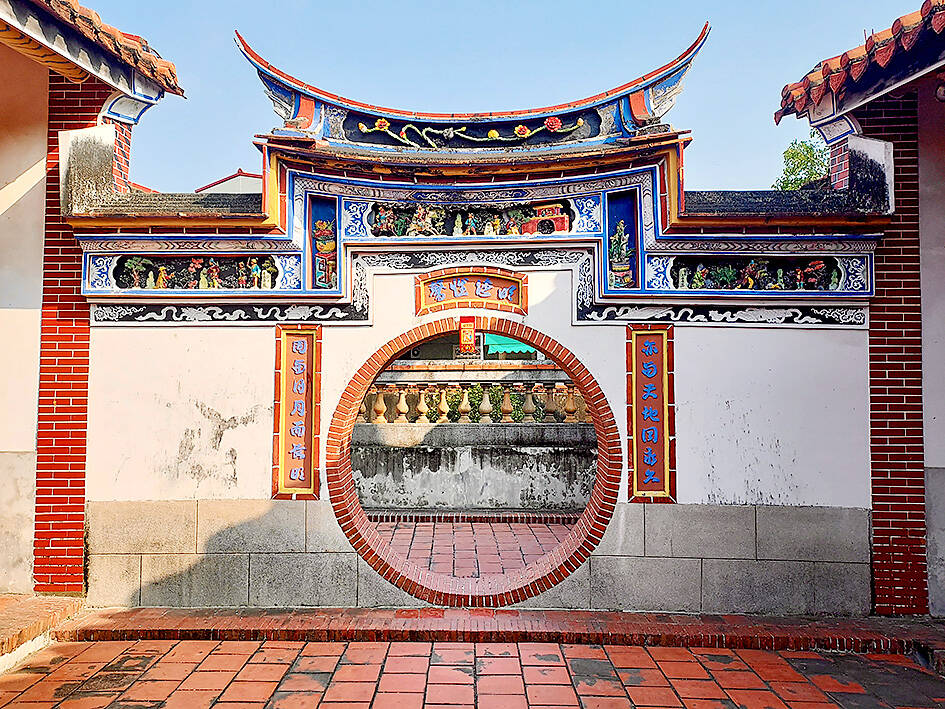
Photo: Tyler Cottenie
SUCCESSFUL HAKKA RESIDENTS
The Yang family was not the only prominent Hakka family to settle in Jiadong. The Hsiao family traces its roots back to an ancestor who migrated to Taiwan over 200 years ago. His grandson became a wealthy merchant through rice milling and cloth dyeing operations, and the family built a mansion for themselves in Jiadong in 1860, repeatedly expanding it until it contained five halls by 1880, all of which remain today.
Building materials were imported from China through Anping Harbor, then Donggang Harbor, before finally arriving at the building site. The complex has been restored into excellent condition faithful to its original appearance. The mansion, now styled Hsiao’s Historic House (蕭家祖屋), is open from Tuesday to Sunday at a cost of NT$50. Guided tours are available at no additional charge.
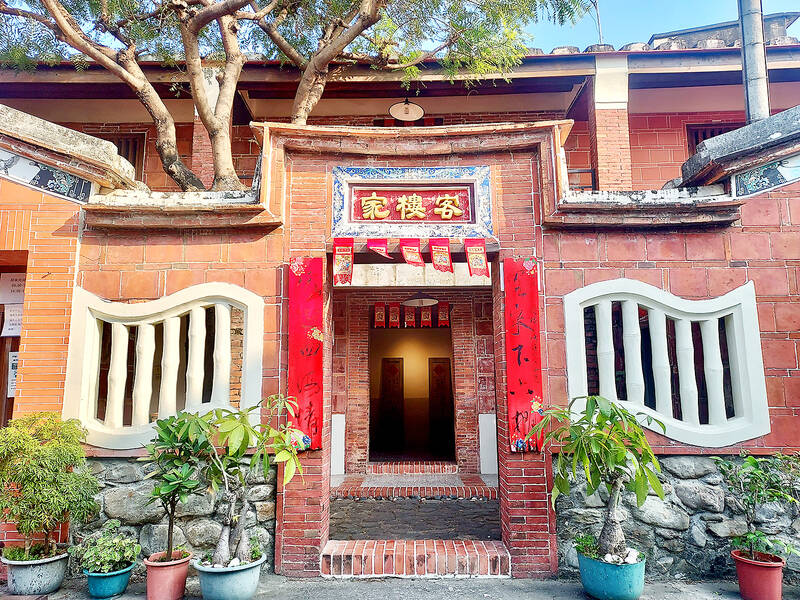
Photo: Tyler Cottenie
Next to the mansion is the “Moon-Walking Pavilion” (步月樓), a narrow brick building set at an odd angle compared to the adjacent modern buildings. This was where the local Hakka volunteer army made their last stand against the Japanese army contingent who landed nearby to assert sovereignty over the area after Taiwan was surrendered by the Qing Dynasty. The Japanese finally broke through into the village at this spot, in the process also destroying a number of cherished books and documents stored here by the Hsiao family.
Just around the corner is the village’s first two-story brick structure, Chang’s House (張家商樓), now beautifully restored. Built in 1910, it functioned as a general store for decades. The building is quite small but well worth the visit just to experience the contrast between this style of building and modern Taiwanese concrete-and-tile homes. The colors inside are warmer and softer, a light fragrance of wood from the beams permeates the house and even sounds seem to echo differently. On the second floor, a cozy balcony gives visitors the perfect chance to sit down for a break with a view of the village.
HAKKA THEN AND NOW
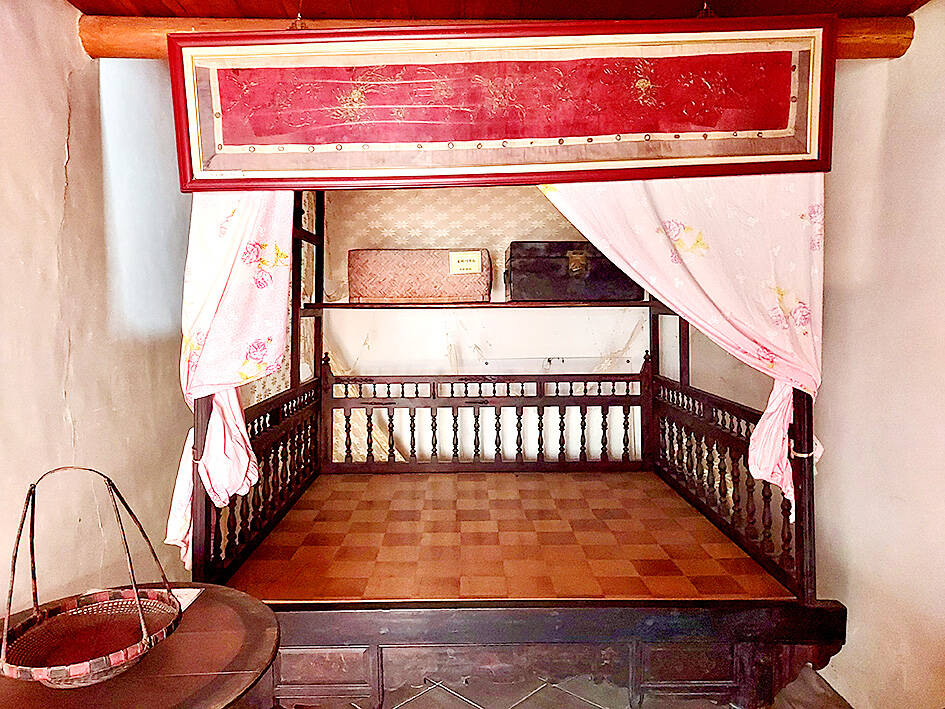
Photo: Tyler Cottenie
Other touches of Hakka culture and local history are easily seen with a casual walk through the old village. The Hakka who lived here in the 19th century often faced conflicts both with Han settlers and the indigenous, and they took defensive matters into their own hands. This included the construction of a wall and four gates to protect the village when necessary. The West Gate, built in 1811 and rebuilt in 1850, is the only one of the original gates still standing, and can be found on Donggen Road (冬根路), which links all three of the sites mentioned above.
Also along the same road is the Poet’s Trail, where Hakka poetry is painted right on the exterior walls of modern buildings, both in visual and written form. The Hakka’s veneration of the written word is further encapsulated by the village’s “Cherish Character Pavilion” (敬字亭), which dates back over 170 years. Any paper with words written on it could not be thrown away like ordinary trash, but had to be disposed of by burning in this special structure.
Amusingly, there is a note in front of the pavilion instructing non-Hakka residents not to burn ghost money here, as the pavilion does bear quite a resemblance to the furnaces outside Taoist temples for burning ghost money.
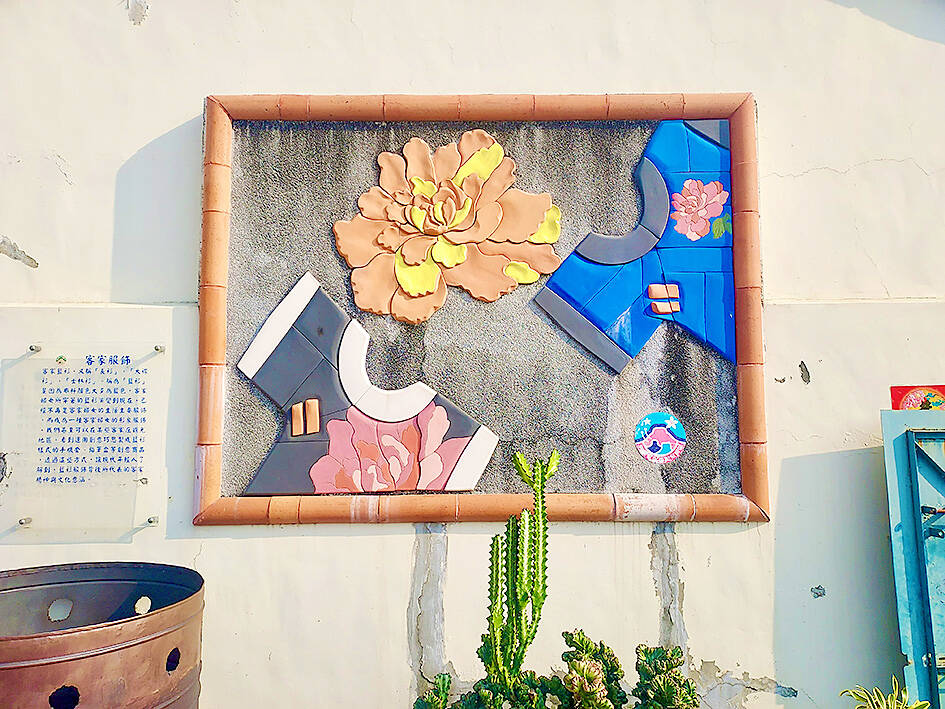
Photo: Tyler Cottenie
Finally, a shop near the North Gate sells traditional glutinous rice flour snacks, including red tortoise cakes, taro rice cakes, mochi and prosperity cakes. Some of these have a folk belief associated with them, like the tortoise cakes — red ovals stamped with the imprint of a turtle shell on top — which are supposed to bring longevity to those who eat them. These colorful delicacies, served on a green leaf, are sure to whet the appetite after a day exploring the village. Everything is made and steamed on site, so visitors can appreciate the entire process of crafting these snacks.
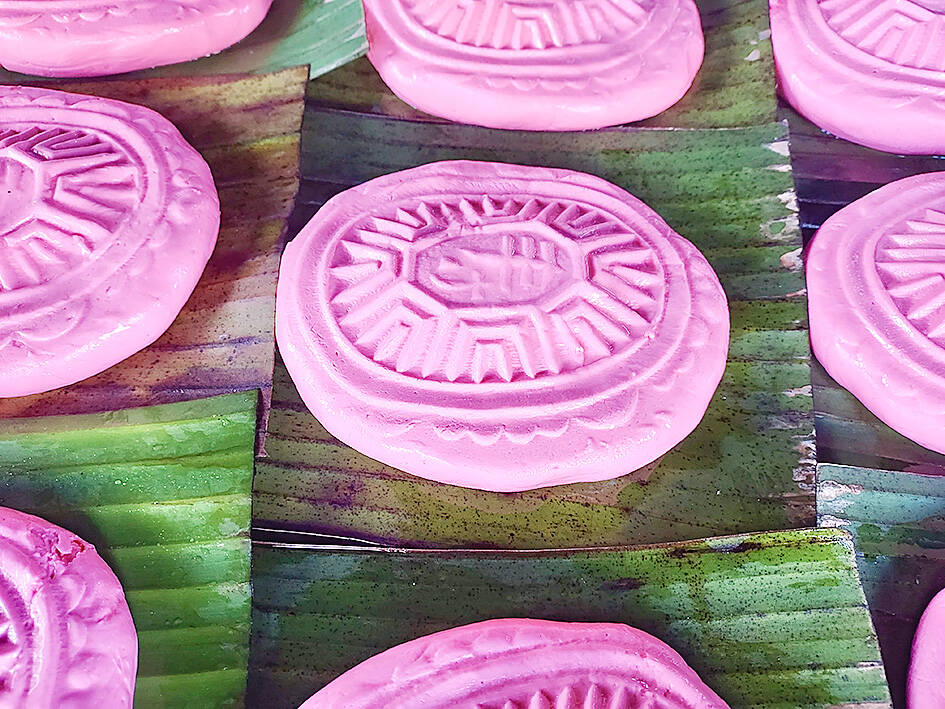
Photo: Tyler Cottenie

When the South Vietnamese capital of Saigon fell to the North Vietnamese forces 50 years ago this week, it prompted a mass exodus of some 2 million people — hundreds of thousands fleeing perilously on small boats across open water to escape the communist regime. Many ultimately settled in Southern California’s Orange County in an area now known as “Little Saigon,” not far from Marine Corps Base Camp Pendleton, where the first refugees were airlifted upon reaching the US. The diaspora now also has significant populations in Virginia, Texas and Washington state, as well as in countries including France and Australia.

On April 17, Chinese Nationalist Party (KMT) Chairman Eric Chu (朱立倫) launched a bold campaign to revive and revitalize the KMT base by calling for an impromptu rally at the Taipei prosecutor’s offices to protest recent arrests of KMT recall campaigners over allegations of forgery and fraud involving signatures of dead voters. The protest had no time to apply for permits and was illegal, but that played into the sense of opposition grievance at alleged weaponization of the judiciary by the Democratic Progressive Party (DPP) to “annihilate” the opposition parties. Blamed for faltering recall campaigns and faced with a KMT chair

Article 2 of the Additional Articles of the Constitution of the Republic of China (中華民國憲法增修條文) stipulates that upon a vote of no confidence in the premier, the president can dissolve the legislature within 10 days. If the legislature is dissolved, a new legislative election must be held within 60 days, and the legislators’ terms will then be reckoned from that election. Two weeks ago Taipei Mayor Chiang Wan-an (蔣萬安) of the Chinese Nationalist Party (KMT) proposed that the legislature hold a vote of no confidence in the premier and dare the president to dissolve the legislature. The legislature is currently controlled
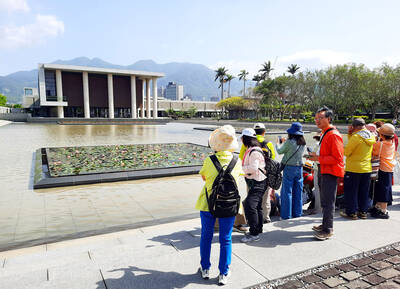
Dull functional structures dominate Taiwan’s cityscapes. But that’s slowly changing, thanks to talented architects and patrons with deep pockets. Since the start of the 21st century, the country has gained several alluring landmark buildings, including the two described below. NUNG CHAN MONASTERY Dharma Drum Mountain (法鼓山, DDM) is one of Taiwan’s most prominent religious organizations. Under the leadership of Buddhist Master Sheng Yen (聖嚴), who died in 2009, it developed into an international Buddhist foundation active in the spiritual, cultural and educational spheres. Since 2005, DDM’s principal base has been its sprawling hillside complex in New Taipei City’s Jinshan District (金山). But